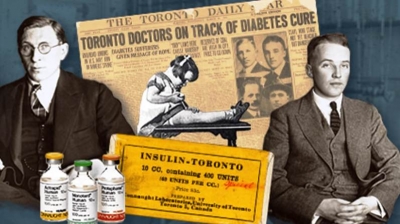
Over one hundred years ago, if someone was diagnosed with diabetes, it was nothing less than a death sentence. There was no treatment, except putting the patient on a high-fat diet devoid of sugar and carbohydrates. The life expectancy of such patients was usually a few months to a year.
Then a link between diabetes and the pancreas was discovered by Edward Albert Sharpey-Schafer who coined the word ‘insulin’ for the first time. In May, 1921 a Canadian surgeon named Frederick Banting began working on extracting insulin from the pancreas for medical use. He approached Prof John Macleod, chair of physiology at the University of Toronto for help. Macleod offered a research assistant named Charles Best to assist Banting, as well as a laboratory and equipment for the research.
Banting and Best began conducting experiments on dogs which were rendered diabetic by the removal of their pancreas. After this, they injected insulin into the dogs, which they extracted from the removed pancreas. They found that after the insulin was injected, the dogs returned to normal.
Their discovery was made public on November 14, 1921. They then began preparations for the treatment of a human subject.
They extracted insulin from the pancreas of cattle from slaughterhouses and used it to treat 14-year-old Leonard Thompson on 11 January 1922. Thompson improved dramatically. The University of Toronto immediately gave pharmaceutical companies license to produce insulin, free of royalties, and the rest is history.
2022 marks 100 years since this historic event.
Picture Credit : Google




